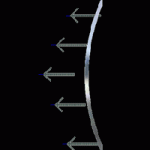Berichten getagd ‘amplifier’
Lyngdorf RoomPerfect explanation
Solosound is convinced that it is almost impossible to create a truly serious audio system without using RoomPerfect of Lyngdorf. In the attached movie is shown how this system works. You can also get the RoomPerfect of Lyngdorf extensively demonstrated at Solosound, there of course used by Solosound Solostatic electrostatic loudspeakers. Please call for an appointment.
Solosound is er van overtuigd dat het vrijwel onmogelijk is een echt serieus audiosysteem te maken zonder RoomPerfect van Lyngdorf. In het bijgaande filmpje wordt uitgelegd hoe het systeem werkt. U kunt de Lyngdorf met Roomperfect ook uitgebreid bij Solosound gedemonstreerd krijgen, daar natuurlijk wel met de Solosound Solostatic elektrostatische luidsprekers. Belt u gerust voor een vrijblijvende afspraak.
Lyngdorf amplifiers Amplifier and CD-player
Lyngdorf RoomPerfect; A super digital amplifier combined with the RoomPerfect system, which corrects room/speaker problems but preserves general speaker character. Perfect combination with the Solostatic 120 and 200 electrostatic loudspeakers.
Technics
Electrostatic loudspeakers use a thin flat diaphragm consisting of a plastic sheet impregnated with a conductive material such as graphite sandwiched between two electrically conductive grids, with a small air gap between the diaphragm and grids. For low distortion operation, the diaphragm must operate with a constant charge on its surface, rather than with a constant voltage. This is accomplished by either or both of two techniques: the diaphragm’s conductive coating is chosen and applied in a manner to give it a very high surface resistivity, and/or a large value resistor is placed in series between the EHT (Extra High Tension or Voltage) power supply and the diaphragm.
What is an electrostatic loudspeaker?
An electrostatic loudspeaker has a very thin, 6 micron, movable diaphragm that is driven by an electrostatic force. The diagram on the left represents a cross section of an electrostatic loudspeaker.
The diaphragm is placed between two perforated fixed electrodes. The Mylar diaphragm is provided with a weak conductive layer. The electrical charge on the diaphragm is kept at a constant level by a High Voltage Unit (HVU) and a resistor. The audio signal, coming from the amplifier, is transmitted to the electrodes by means of a step-up transformer.
Unlike a conventional dynamic speaker, an electrostatic: – Has a large radiating surface. Typically, this is 100 times larger than that of a conventional tweeter. This results in considerably less intermediation distortion, which in turn causes the overall sound effect to be much more in balance. – Has a moving part, the diaphragm, whose mass is almost negligible and, moreover, whose entire surface is driven.
In a dynamic speaker, on the other hand, only a small voice coil drives the relatively heavy cone, resulting in various types of distortion
– Can reproduce a wide frequency range because of its extremely light diaphragm, thus replacing both the conventional mid-tone speaker and tweeter. An additional advantage is the relatively simple audiophile cross-over network.
– Is an ‘open’ loudspeaker, because usually, an electrostatic is not placed in a cabinet. This rules out sound colouring resulting from cabinet resonance.
What is a hybride electrostatic loudspeaker?
A hybrid electrostatic loudspeaker is a combination of an electrostatic and a dynamic loudspeaker. Solosound applies this combination to build loudspeakers that you can easily place in any type of living room.
What is the added value of a hybride electrostatic loudspeaker? To reproduce low tones, an electrostatic needs a very large sound radiation area, in excess of 1.5m2. In addition, a full range electrostatic must be placed at least one metre from the nearest wall of an interior, because an electrostat is an open system. This takes up more space than most customers would like, or would have available, in their living rooms. That is why Solosound build hybrid electrostatics.
Other sources of information about electrostatic loudspeakers:

